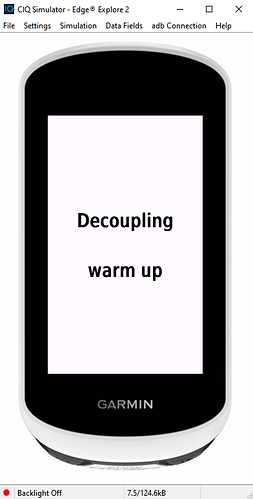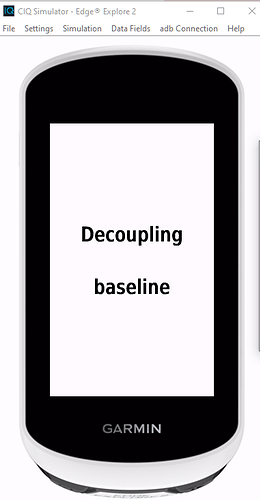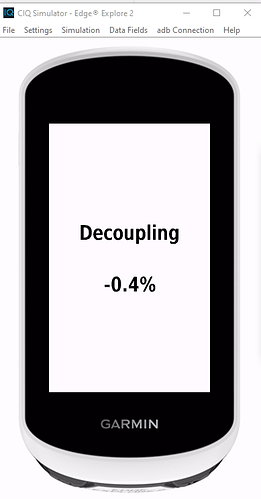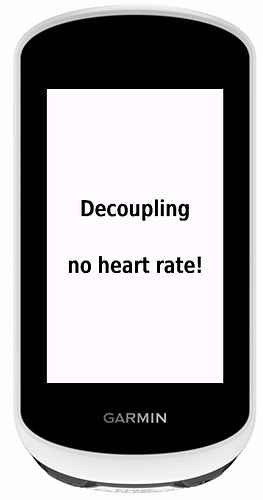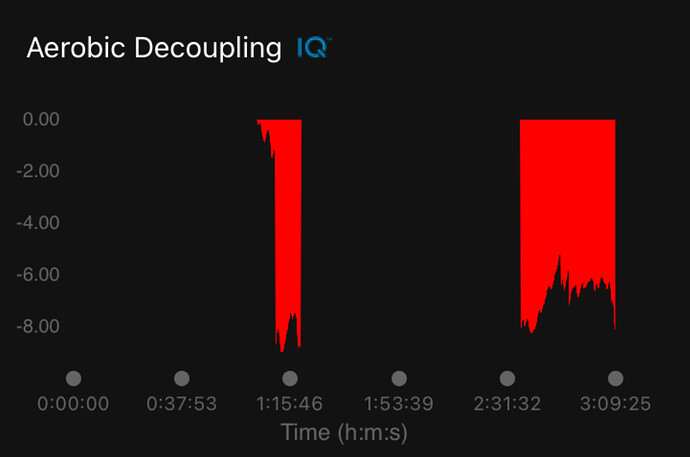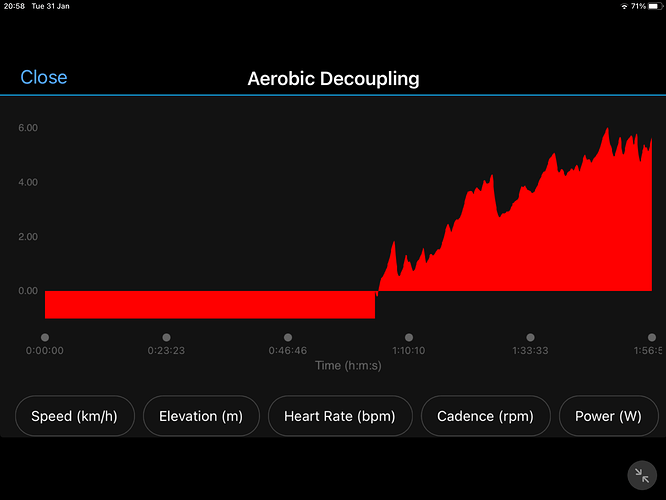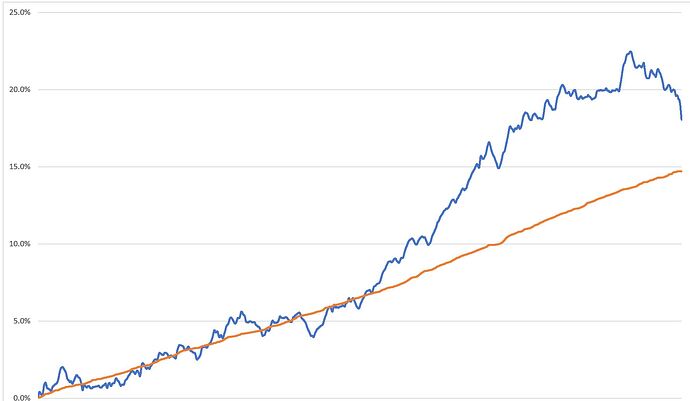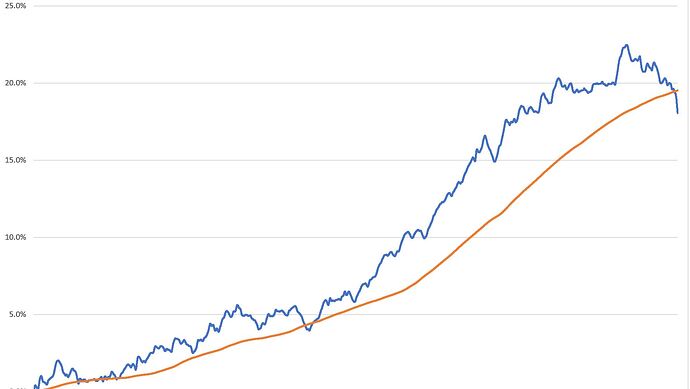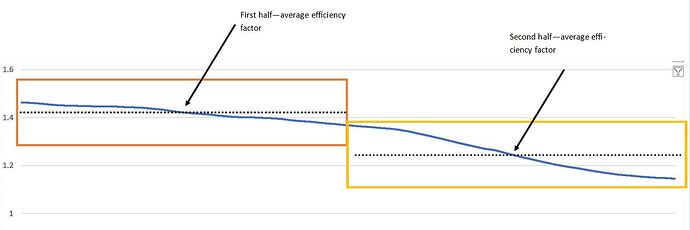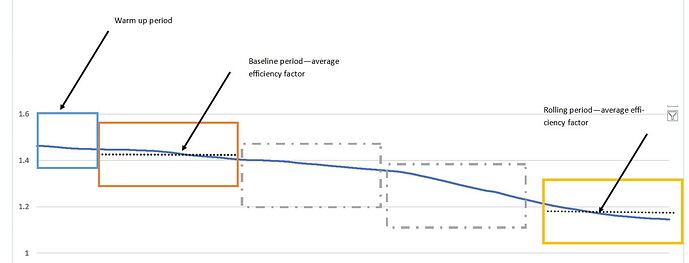As per the Polarized thread I am developing a Garmin IQ data field that will show aerobic decoupling in real time on a supported Garmin unit.
Here is how it will work
There will be two settings you can change
- Warmup duration
- Baseline duration
The defaults at the moment are 20 mins for warm up, and then the next 30 mins for the baseline.
During the warm up period the data field doesn’t do anything. After the warm up period the data field collects power and heart rate data over the baseline duration. At the end of the baseline duration it calculates normalised power and average heart rate and derives an efficiency factor. This is marked as the baseline efficiency factor, which for current defaults will be calculated from 30 minutes of power and heart rate data.
Every second after the baseline, it updates the normalised power and average heart based on a rolling duration equal to the baseline duration. For instance, if you sett he baseline duration to 60 minutes than the normalised power is that calculated from the last 60 minutes of power data, same for average heart rate. With the new normalised power and average heart rate it calculates the latest efficiency factor and compares this to the baseline efficiency factor, calculating a percentage difference. This percentage difference is shown as decoupling and is shown as a percentage to 1 decimal place. decoupling may be positive or negative.
Below is a screen clip of the field, when running in the Garmin IQ simulator against my real data from a Z1/Z2 (with 5 seconds of zone 3!) ride on Saturday 7th January 2023. As the field calculates decoupling over a rolling period I can’t fast forward through the simulator to see the figure at the end. I know from software analysis of this ride of 2 hours 43 mins that the aerobic decoupling of full ride was calculated at -1.27%. I’m waiting for the simulator to tick along to the end of my activity to see if it generates the same number, a sign I’ve got the calculations and rolling windows for normalised power and average heart rate working correctly.
Previously, it’s only been possible to see this figure during post ride analysis in software which usually compares the efficiency factor for the second half of a ride, against the efficiency factor for the first half.
The question thus becomes how to make best use of this field during a steady endurance ride. Joe Friel talked about getting decoupling below 5% for the duration you aiming at before moving onto the next stage of your training. But what might we be able to do when we can see the number in real time during a ride?
I’ve had some thoughts below
- If you are sure you’ve fuelled and hydrated enough and are not unduly affected by heat, but you are seeing your aerobic decoupling rising past 5% after a period of well disciplined riding in Z1 / Z2 (of 5 zone model) heart rate.
Is it time to bring the ride to a close and head back to base, to ensure you don’t induce an excessive amount of fatigue. You’ve reached the duration limit of your current aerobic endurance this time?
- If you start to see your decoupling exceed 5% and the duration is way shorter than your typical endurance ride. You are sure you’ve fuelled and hydrated enough but feel affected by the heat.
It’s likely you are in the early stages of heat stress and need to take a break in the shade, take on more water and salts, and cool down? Then when you restart be sure to eat and drink plenty and stop in shade where necessary. If your decoupling continues to rise, it is a sign to bring your ride to a close and head for home, to prevent progressing into heat exhaustion and undue fatigue.
- If you start to see your decoupling exceed 5% and the duration is way shorter than your typical endurance ride. You’ve been pretty lax about fuelling / hydration, but are not unduly affected by heat.
It’s a sign that you need to take on some fuel and up your drinking rate to see if you can bring your decoupling under control. If you can’t and decoupling continues to rise, it’s time to bring your ride to a close and head for base.
- The decoupling is negative
What does this mean?
I’m not a coach or physiology expert, what do others think?
